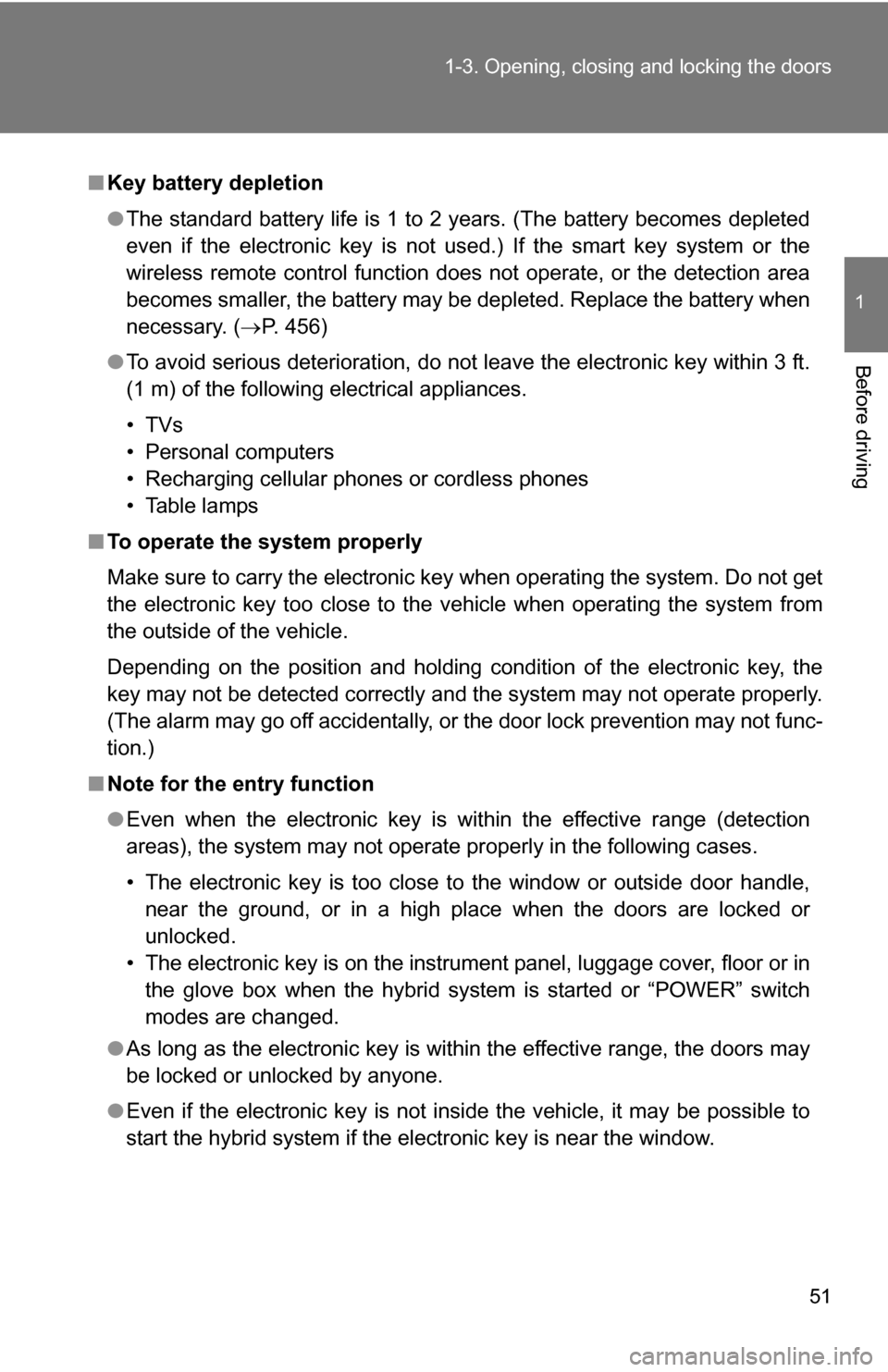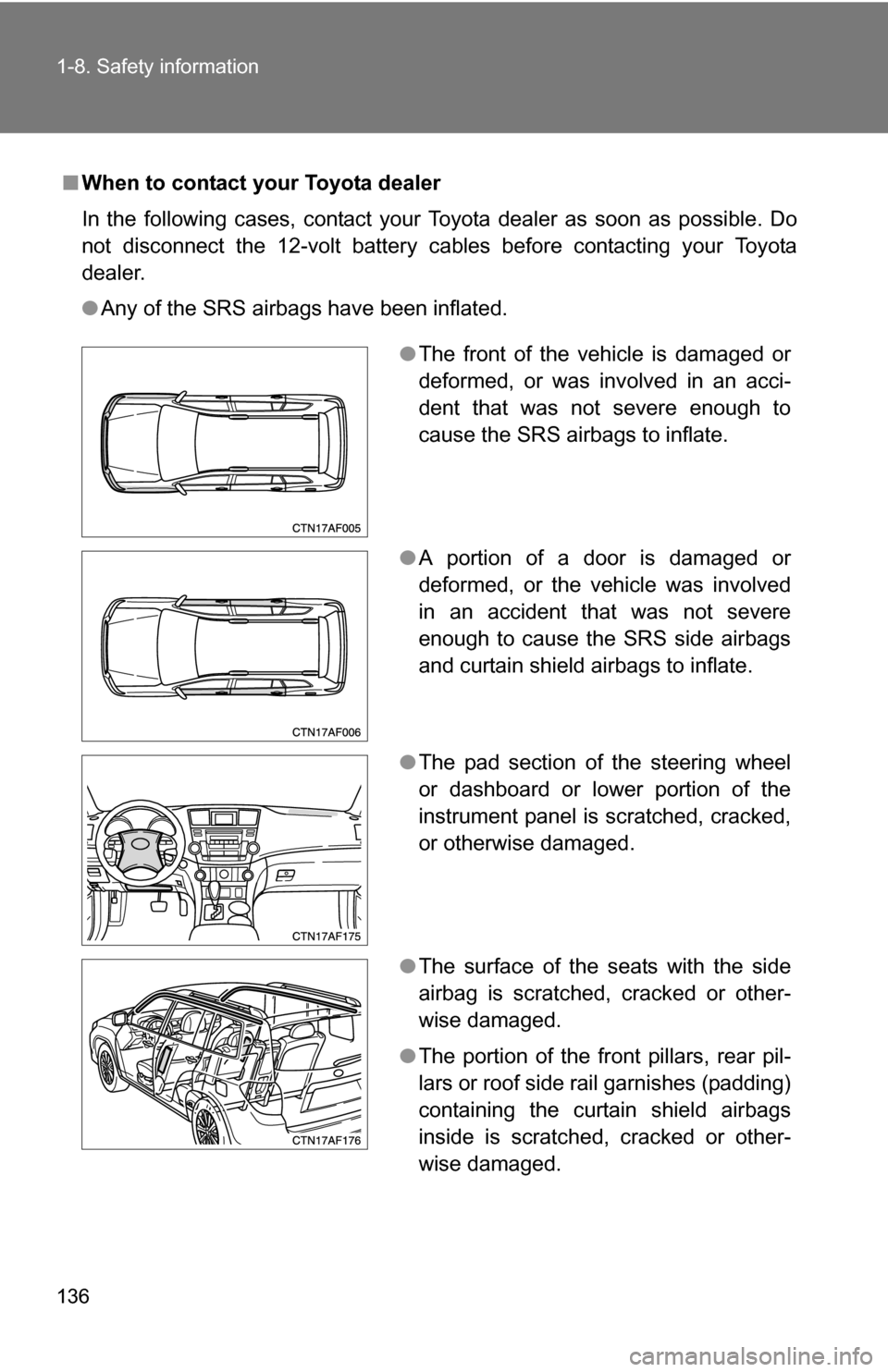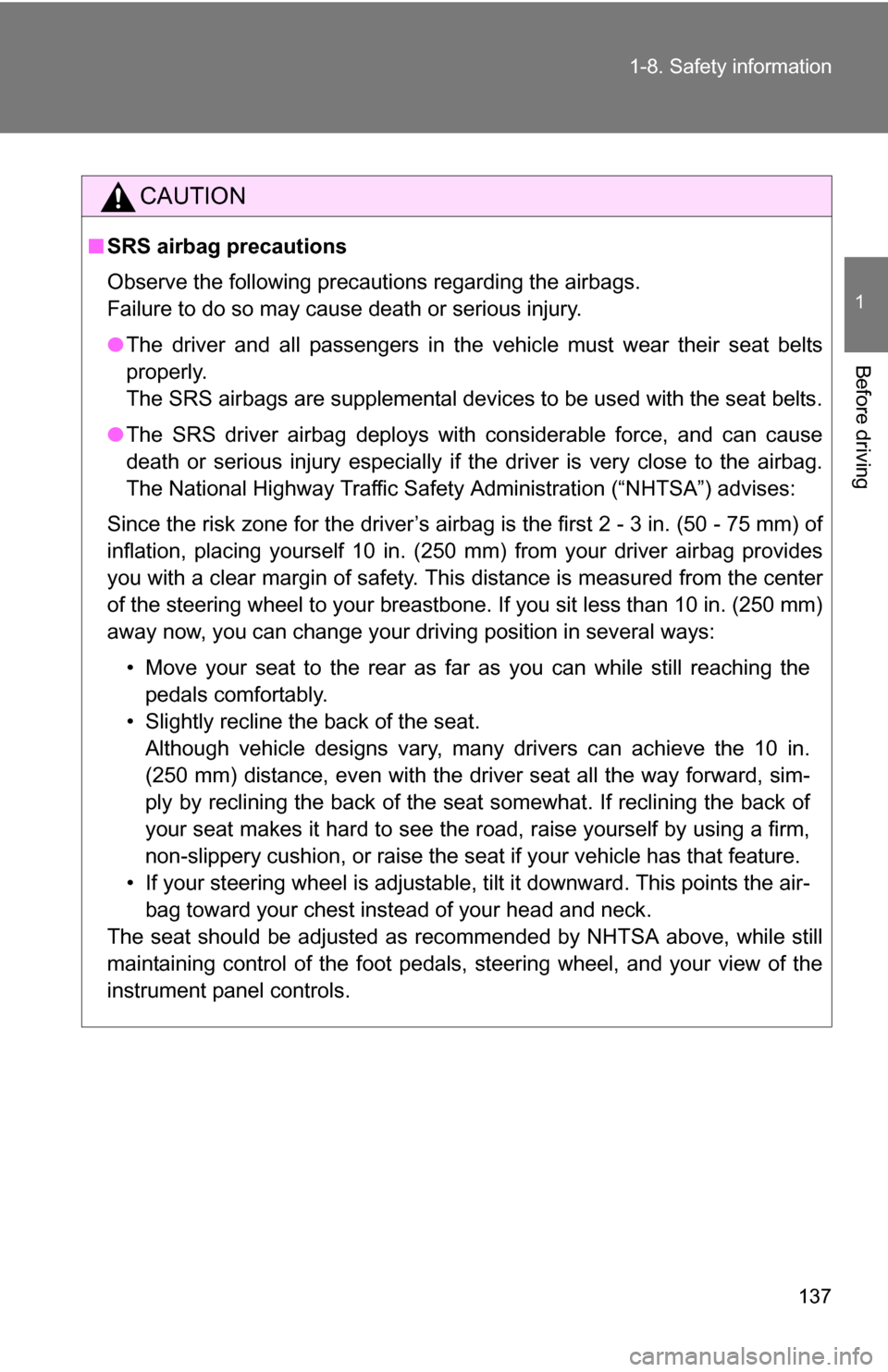Page 16 of 580
16
Rear view monitor system
(vehicles without navigation
system)
P. 211
Tilt and telescopic steering lock release
lever
P. 105
Glove box P. 365
Pictorial indexInstrument panel
Power back door
main switch
P. 78
Parking brake pedal P. 183
Hood lock release lever P. 420
Auxiliary box P. 373
“POWER” switch P. 174
Multi-information
display
P. 190
Fuel filler door opener P. 115
Fog light switch
Headlight switch
Turn signal lever P. 204
P. 200
P. 182
Windshield wipers and
washer switch
Rear window wiper and
washer switch
P. 205
P. 207
Gauges and
meters
P. 184
Page 17 of 580
17
A
: If equipped
Power outlet main switch P. 381
Power back door switch
P. 77
Instrument panel light control dial P. 185
Windshield wiper de-icer
switch
P. 269
Outside rear view
mirror switches
P. 108
Page 18 of 580
18
B
Talk switch , * P. 335
Pictorial indexInstrument panel
Audio remote control switches P. 299
Climate remote control switches P. 270
Cruise control switch
P. 208Telephone switch , * P. 335
“DISP” switch P. 190
Page 20 of 580
20
Pictorial indexInstrument panel
Rear window and outside rear view mirror defogger
switch
/rear window defogger switch P. 267
D
Vehicles with a front automatic air conditioning system
Vehicles with a front manual air conditioning system
Rear window and outside rear view mirror defogger
switch
/rear window defogger switch P. 267
Air conditioning
system
P. 253
Air conditioning
system
P. 248
Page 51 of 580

51
1-3. Opening, closing and locking the doors
1
Before driving
■
Key battery depletion
●The standard battery life is 1 to 2 years. (The battery becomes depleted
even if the electronic key is not used.) If the smart key system or the
wireless remote control function does not operate, or the detection area
becomes smaller, the battery may be depleted. Replace the battery when
necessary. ( P. 456)
● To avoid serious deterioration, do not leave the electronic key within 3 ft.
(1 m) of the following electrical appliances.
•TVs
• Personal computers
• Recharging cellular phones or cordless phones
• Table lamps
■ To operate the system properly
Make sure to carry the electronic key when operating the system. Do not get
the electronic key too close to the vehicle when operating the system from
the outside of the vehicle.
Depending on the position and holding condition of the electronic key, the
key may not be detected correctly and the system may not operate properly.
(The alarm may go off accidentally, or the door lock prevention may not func-
tion.)
■ Note for the entry function
●Even when the electronic key is within the effective range (detection
areas), the system may not operate properly in the following cases.
• The electronic key is too close to the window or outside door handle,
near the ground, or in a high place when the doors are locked or
unlocked.
• The electronic key is on the instrument panel, luggage cover, floor or in the glove box when the hybrid system is started or “POWER” switch
modes are changed.
● As long as the electronic key is within the effective range, the doors may
be locked or unlocked by anyone.
● Even if the electronic key is not inside the vehicle, it may be possible to
start the hybrid system if the electronic key is near the window.
Page 77 of 580
77
1
1-3. Opening, closing and locking the doors
Before driving
Back door
The back door can be opened using the back door opener. The back
door can be locked/unlocked using the wireless remote control or
entry function.
■ Back door opener
Push up
Raise
■ Entry function
P. 4 5
■ Wireless remote control
P. 6 5
The power back door (if equipped) can be opened/closed using the
power back door switch or wireless remote control.
■ Power back door switch es (vehicles with power back door)
Instrument panel
Push and hold the switch to
open/close.
Pressing the switch again
while the power back door is
operating will cause the opera-
tion to reverse.
However, the reverse opera-
tion cannot be performed for
the first second after pressing
the switch to operate the door.
Page 136 of 580

136 1-8. Safety information
■When to contact your Toyota dealer
In the following cases, contact your Toyota dealer as soon as possible. Do
not disconnect the 12-volt battery cables before contacting your Toyota
dealer.
●Any of the SRS airbags have been inflated.
●The front of the vehicle is damaged or
deformed, or was involved in an acci-
dent that was not severe enough to
cause the SRS airbags to inflate.
● A portion of a door is damaged or
deformed, or the vehicle was involved
in an accident that was not severe
enough to cause the SRS side airbags
and curtain shield airbags to inflate.
● The pad section of the steering wheel
or dashboard or lower portion of the
instrument panel is scratched, cracked,
or otherwise damaged.
● The surface of the seats with the side
airbag is scratched, cracked or other-
wise damaged.
● The portion of the front pillars, rear pil-
lars or roof side rail garnishes (padding)
containing the curtain shield airbags
inside is scratched, cracked or other-
wise damaged.
Page 137 of 580

137
1-8. Safety information
1
Before driving
CAUTION
■
SRS airbag precautions
Observe the following precautions regarding the airbags.
Failure to do so may cause death or serious injury.
●The driver and all passengers in the vehicle must wear their seat belts
properly.
The SRS airbags are supplemental devices to be used with the seat belts.
● The SRS driver airbag deploys with considerable force, and can cause
death or serious injury especially if the driver is very close to the airbag.
The National Highway Traffic Safety Administration (“NHTSA”) advises:
Since the risk zone for the driver’s airbag is the first 2 - 3 in. (50 - 75 mm) of
inflation, placing yourself 10 in. (250 mm) from your driver airbag provides
you with a clear margin of safety. This distance is measured from the center
of the steering wheel to your breastbone. If you sit less than 10 in. (250 mm)
away now, you can change your driving position in several ways:
• Move your seat to the rear as far as you can while still reaching thepedals comfortably.
• Slightly recline the back of the seat. Although vehicle designs vary, many drivers can achieve the 10 in.
(250 mm) distance, even with the driver seat all the way forward, sim-
ply by reclining the back of the seat somewhat. If reclining the back of
your seat makes it hard to see the road, raise yourself by using a firm,
non-slippery cushion, or raise the seat if your vehicle has that feature\
.
• If your steering wheel is adjustable, tilt it downward. This points the air- bag toward your chest instead of your head and neck.
The seat should be adjusted as recommended by NHTSA above, while still
maintaining control of the foot pedals, steering wheel, and your view of the
instrument panel controls.